Capacity inputs v31
GB will have over 350GW of connected generation by 2050
The capacity stack reflects the total installed capacity of all power generators connected to the GB National Grid, including interconnectors.
The GB Electricity System Operator (ESO) has committed to having the capability to run a zero carbon grid by 2025; and a fully green grid, all the time, by 2035. The UK government has committed to the UK being net zero by 2050. These dates influence the growth of renewables in our capacity stack.
Here's the full capacity stack from 2023 - 2050. We break this down bit by bit below.
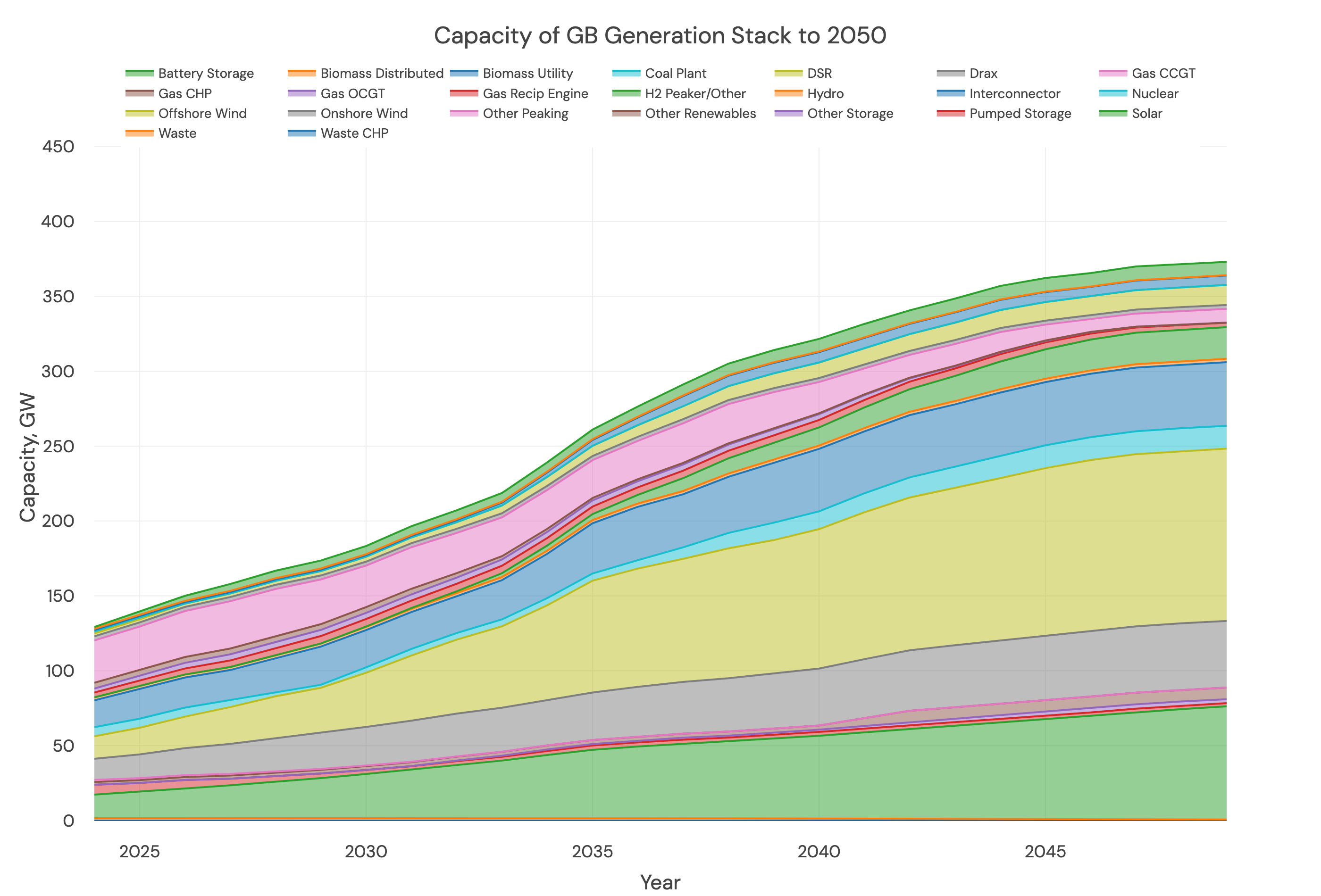
Taking plant availability into account, here is the combined capacity stack

Wind Capacity at 150 GW by 2050 with over 100 GW of it offshore
From now until 2035, we get individual offshore wind farm capacity from our build-out pipeline. We know what has a Contract for Difference (CfD) contract and what gets Renewable Obligation certificates, so we can work out what is subsidised. We have adjusted our buildout to account for the lack of offshore wind in AR5. This has reduced offshore wind capacity in the short term, but we have assumed that this shortfall will be made up by 2035. This does seem like a short timeframe to make up the shortfall, but without doing so, it will be extremely difficult to hit net zero by 2050 (the UK Government's net zero target).
Similarly, until 2035 we get individual onshore wind farm capacity from Renewable Obligation and Feed in Tariff registers. We remove these from the pre-2035 FES numbers for onshore wind and get a subsidised and unsubsidised pipeline.
We assume all new CfDs going forward are floored at £0/MWh, and early rounds (labelled AR1 in the figure) are priced at £100/MWh. Onshore wind and solar PV were not eligible for CfDs in AR2 or AR3.
After 2035, we take buildout numbers from the FES.
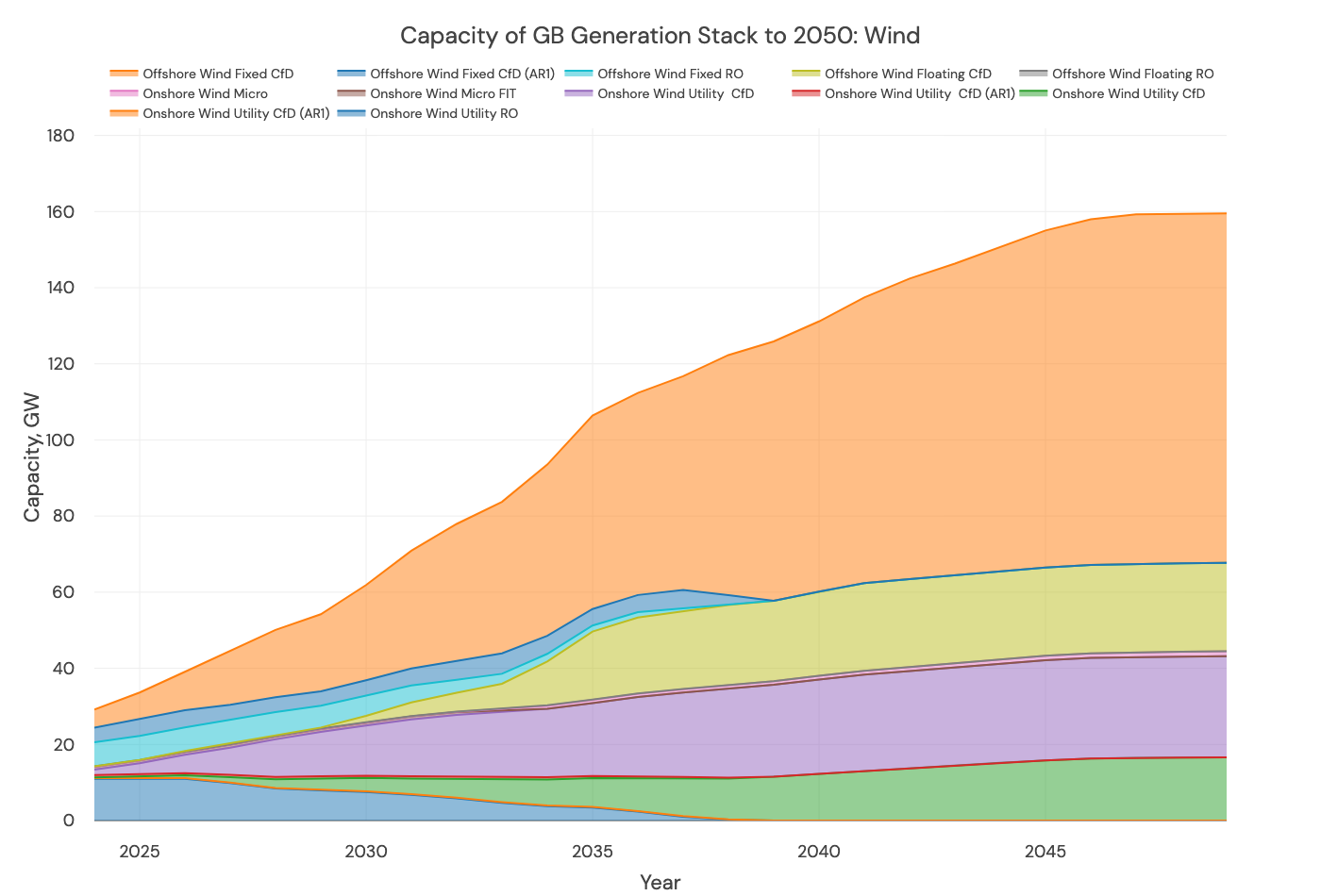
Subsidised solar retires whilst domestic and unsubsidised utility PV gets to 80GW by 2050
For solar, from now until 2035, we use the Renewable Obligation and Feed-in-Tariff registers. We extract these numbers from those in the FES to get an unsubsidised and subsidised pipeline to 2050.
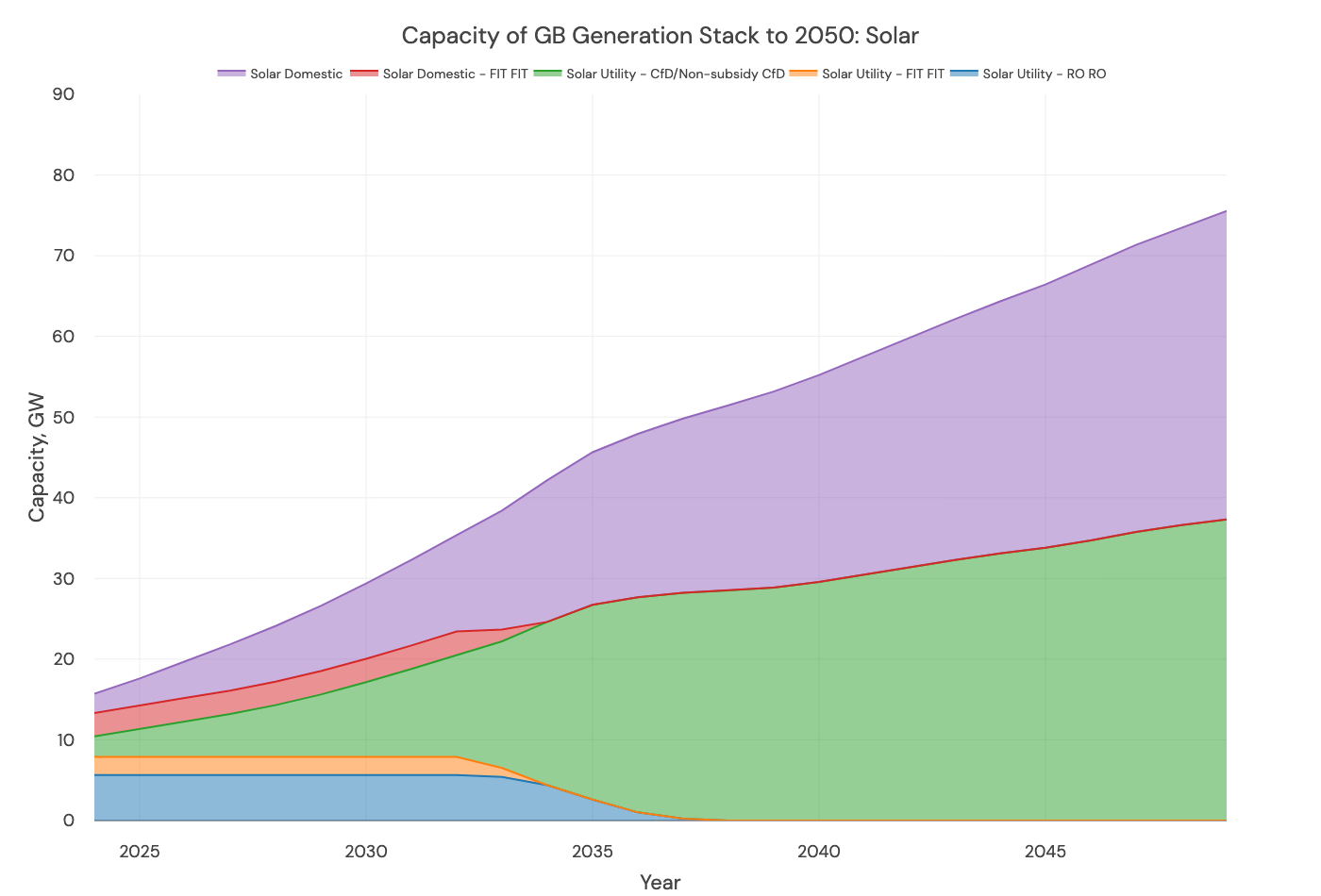
Gas: low-efficiency CCGT goes by 2041, with CCS picking up after 2031
The capacities of Gas CCGT, OCGT, and Recip engines are determined by our Capacity Expansion model (which flexes the build out of each technology in response to economic signals).
Low efficiency CCGT plants retire by 2042, mid efficiency CCGTs, OCGTs and Gas CHP retire by 2046. High efficiency Gas CCGT and Gas Recips remain online in 2050.
These retirements are sensitive to the role of carbon in the Capacity Market. More on how we approach this here.
We forecast 7 GW of CCGT CCS by 2050.
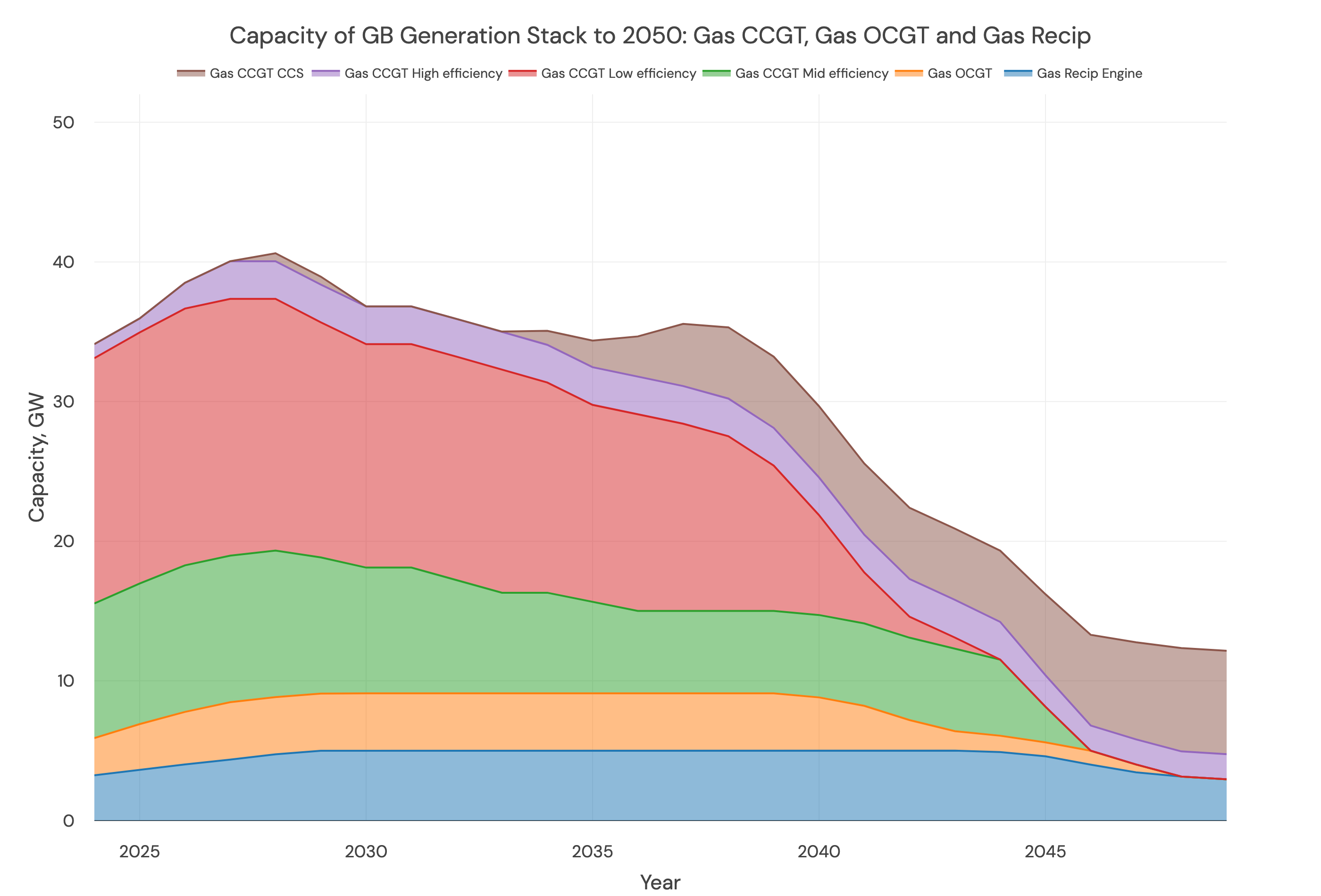
Low carbon baseload provided by biomass and new nuclear
We take biomass numbers from the FES, and separate out Drax from this capacity as their public accounts give extra information (particularly around CCS).
Old nuclear consists of Hartlepool, Heysham 1 and 2, Torness, and Sizewell B. New nuclear consists of Hinkley Point C (online in 2029 and 2031), Sizewell C (in 2033 and 2036), along with 8.8GW of other new nuclear from 2035.
We have updated our models according to the announcement (Jan 2024) of the delay to Hinkley Point C.
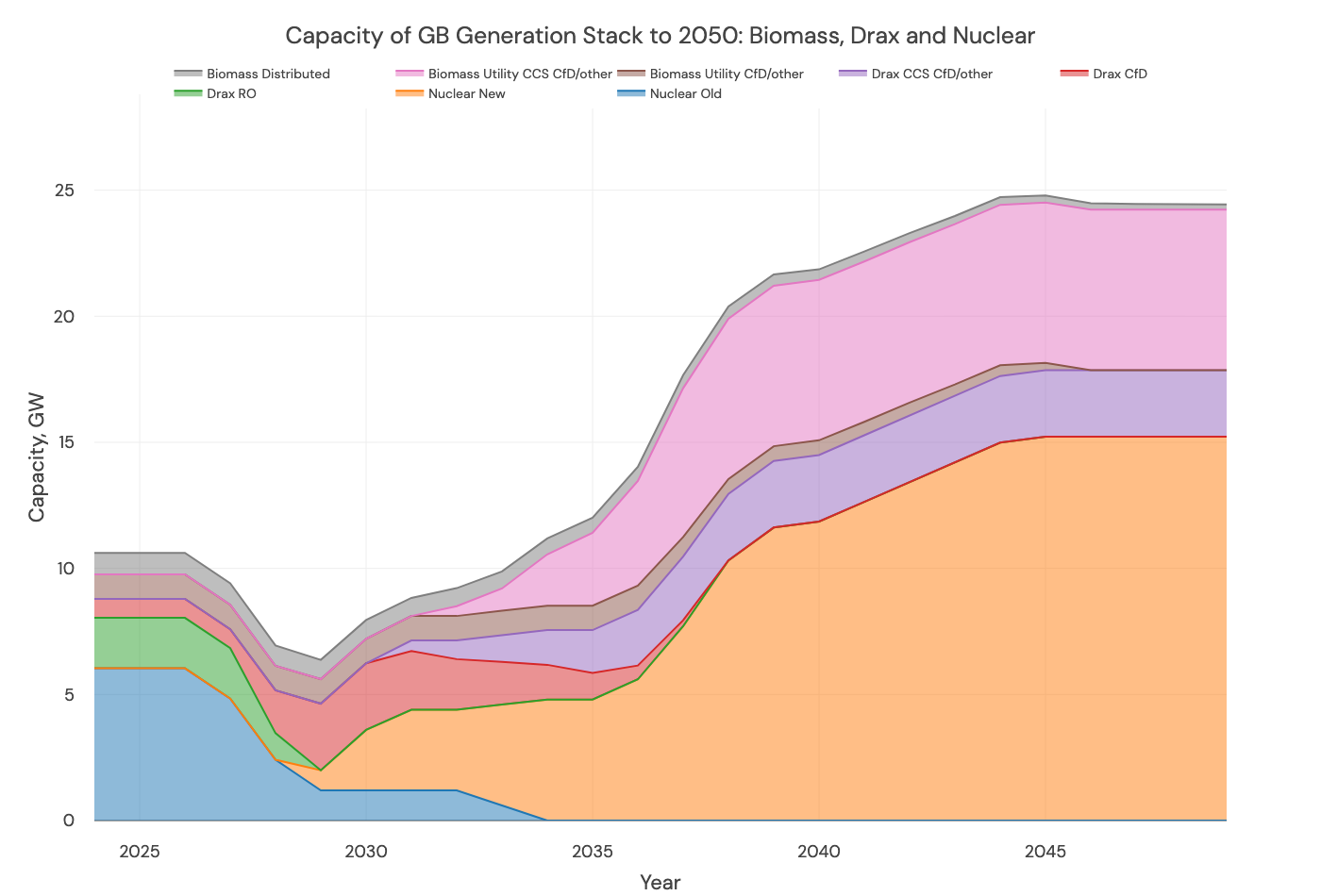
Low carbon peaking generation: DSR and hydrogen peakers
The FES provides a guide on hydrogen capacity but doesn't dictate what it is. We assume it's all peaking as we don't think a hydrogen CCGT makes economic sense. More on that next.
Demand Side Response (DSR) is given three subtypes: Low, Mid and High price. This indicates the cost of using it (i.e. how easily it can be used) at times of system stress. Low is priced at £250/MWh, Mid at £500/MWh, and High at £1500/MWh.
Low-priced DSR might be automatically turning down electric heating or cooling in response to a high price. High-priced DSR might require more manual intervention, that has a cost - like shutting off a factory supply line, suspending manufacturing for a few hours.
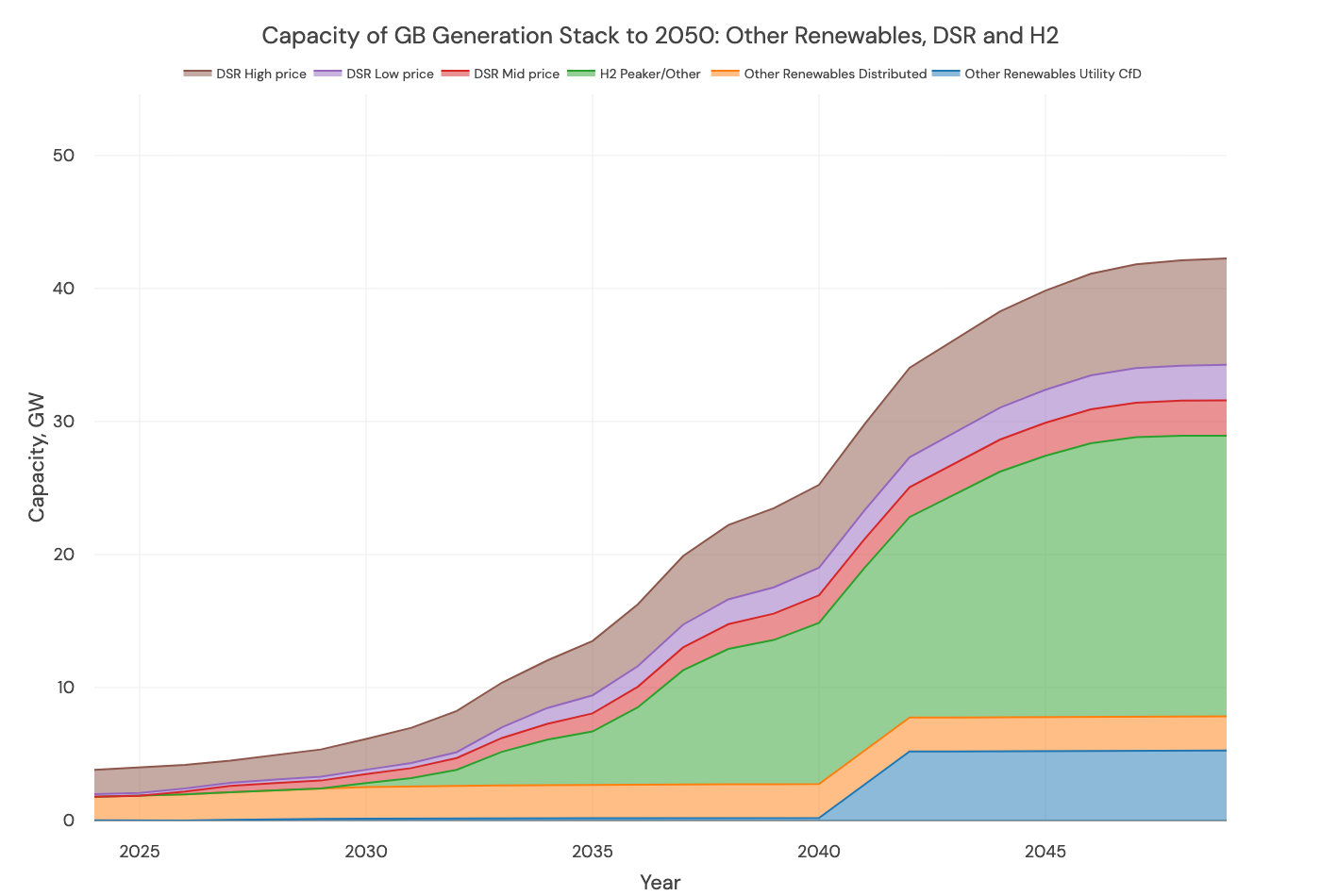
Storage: battery pumped, and other energy storage, capacity and duration
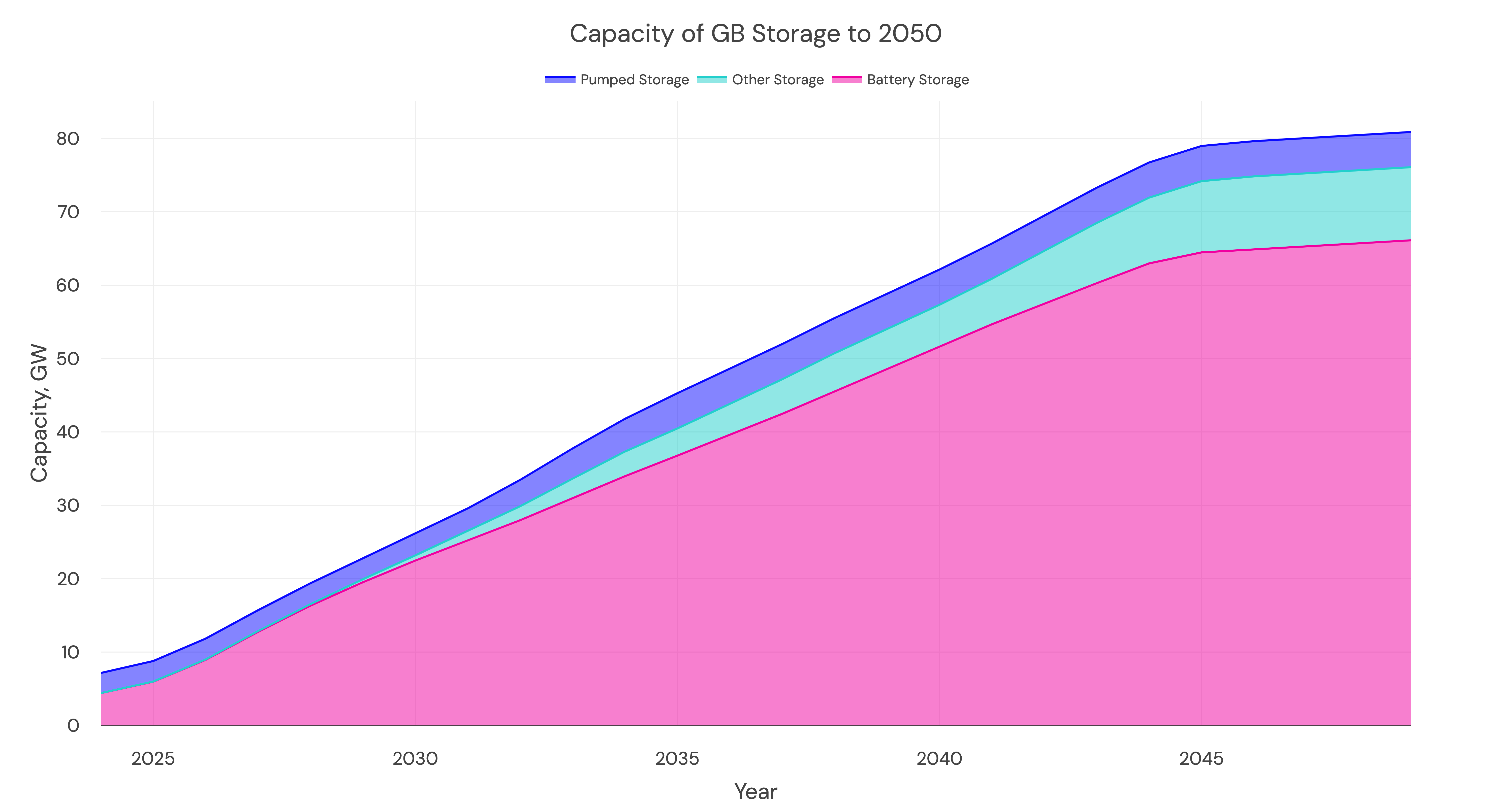
Updated 2 months ago